Abstract
Treatment of bean (Phaseolus vulgaris L.) seedlings with low levels of salinity (50 or 100 millimolar NaCl) decreased the rate of light-induced leaf cell expansion in the primary leaves over a 3 day period. This decrease could be due to a reduction in one or both of the primary cellular growth parameters: wall extensibility and cell turgor. Wall extensibility was assessed by the Instron technique. Salinity did not decrease extensibility and caused small increases relative to the controls after 72 hours. On the other hand, 50 millimolar NaCl caused a significant reduction in leaf bulk turgor at 24 hours; adaptive decreases in leaf osmotic potential (osmotic adjustment) were more than compensated by parallel decreases in the xylem tension potential and the leaf apoplastic solute potential, resulting in a decreased leaf water potential. It is concluded that in bean seedlings, mild salinity initially affects leaf growth rate by a decrease in turgor rather than by a reduction in wall extensibility. Moreover, longterm salinization (10 days) resulted in an apparent mechanical adjustment, i.e. an increase in wall extensibility, which may help counteract reductions in turgor and maintain leaf growth rates.
Full text
PDF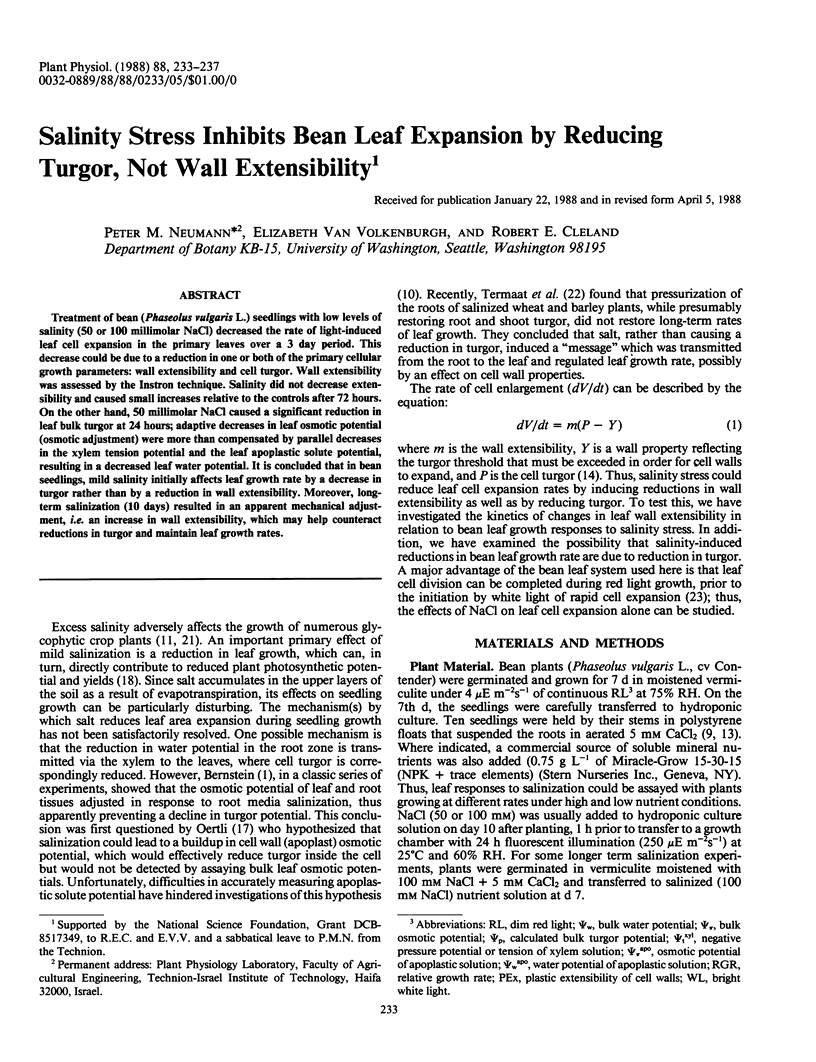
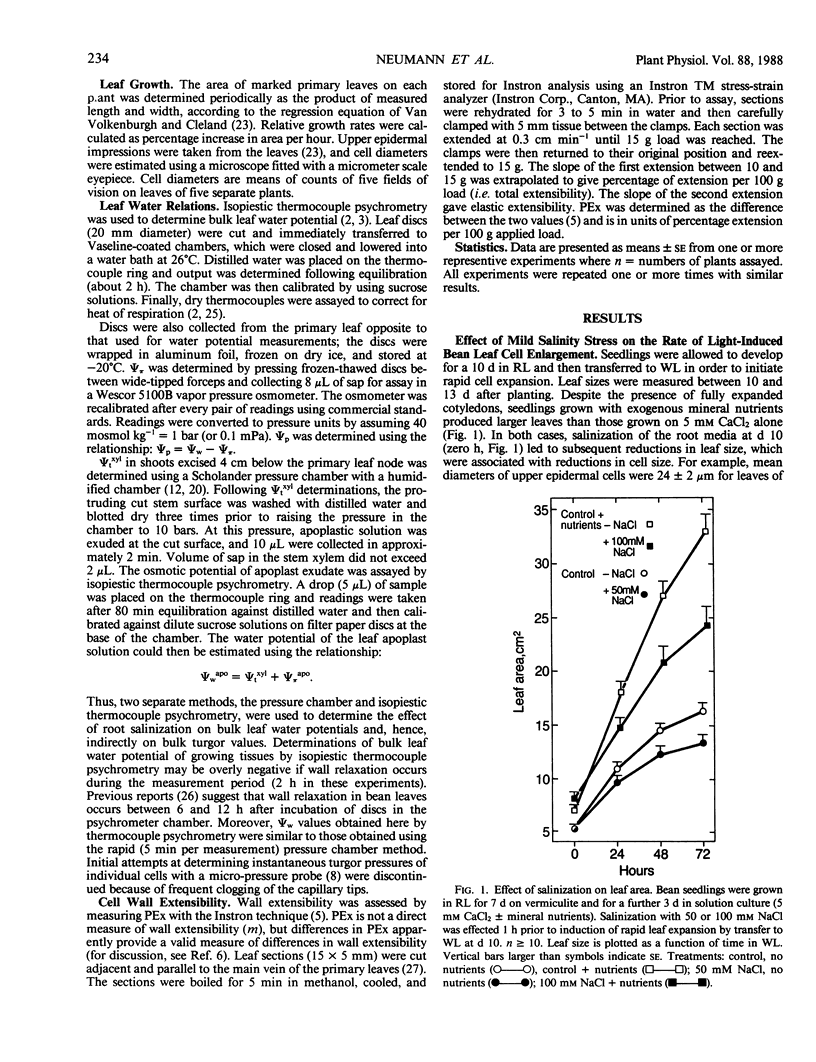
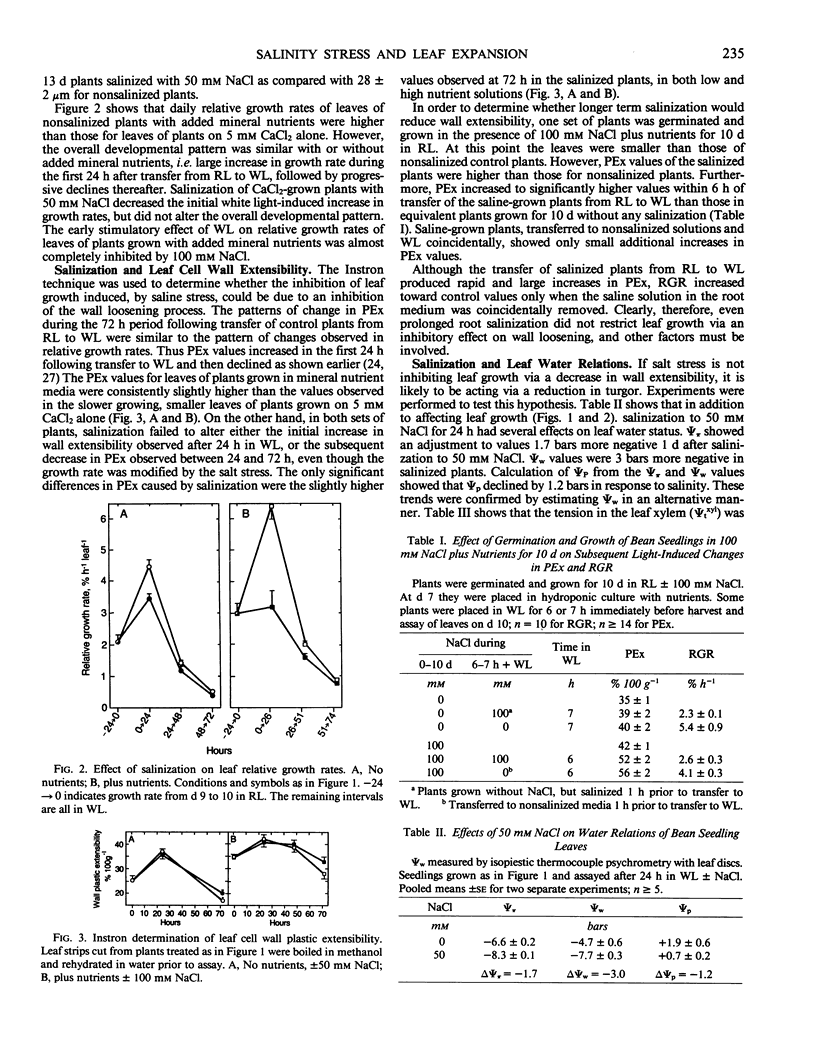
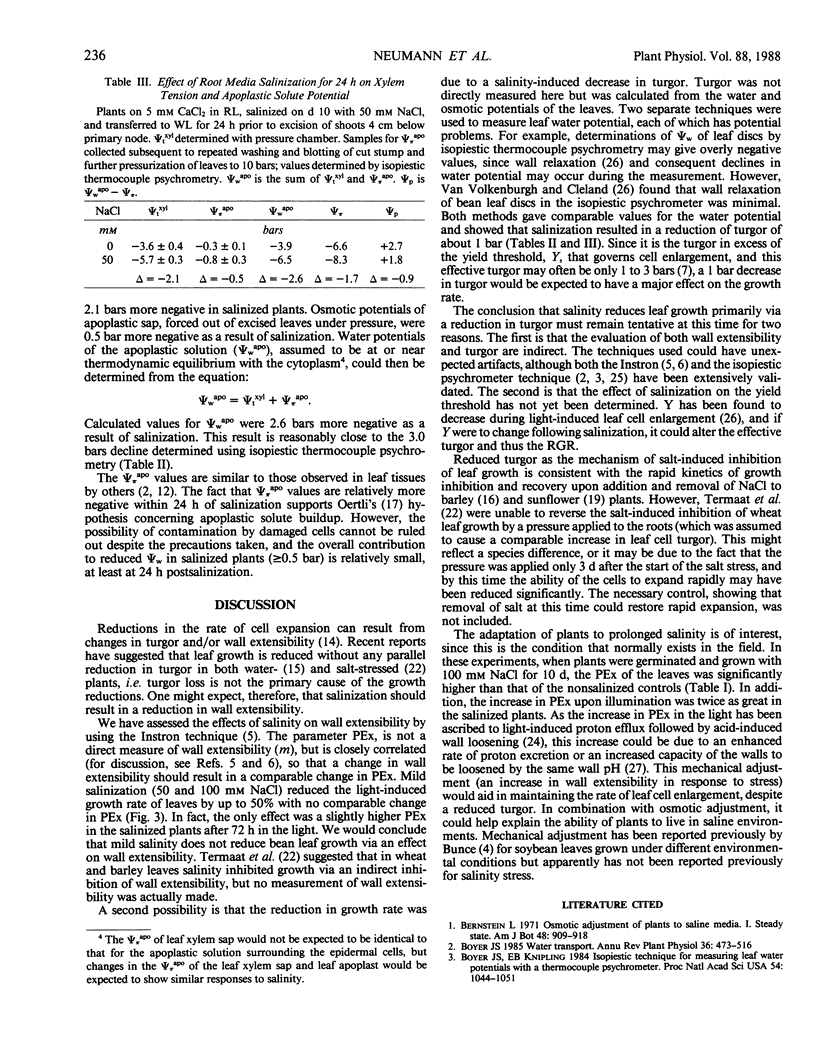
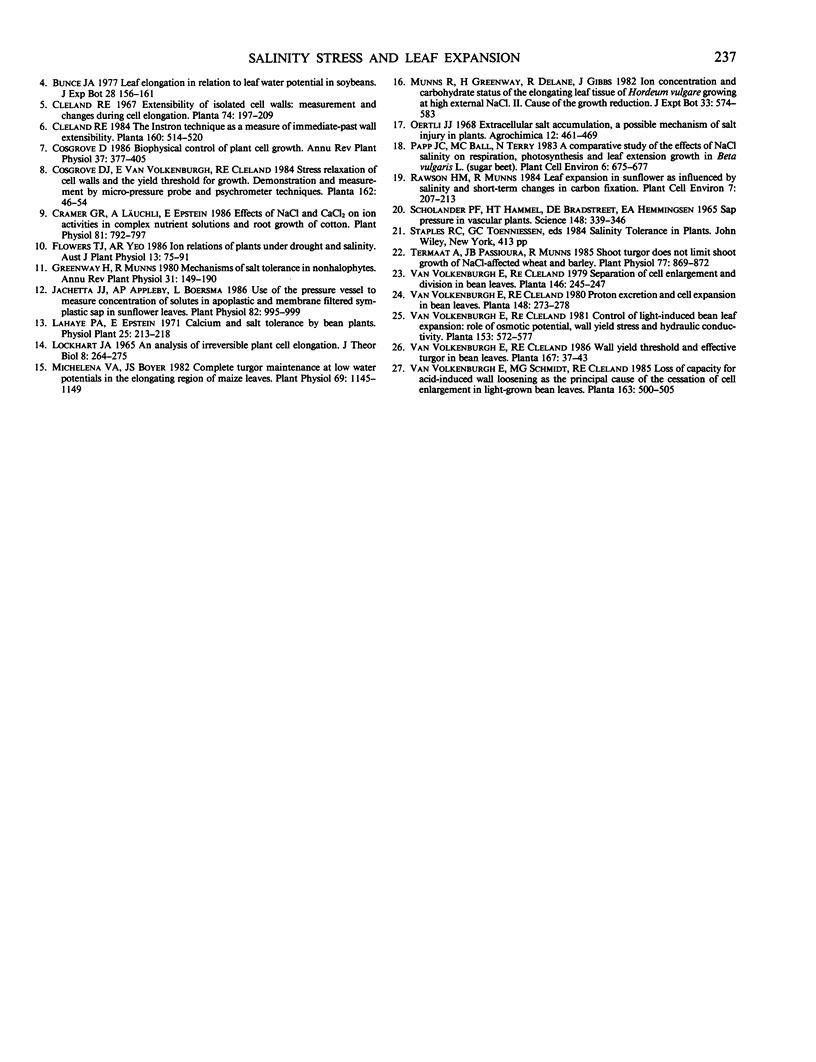
Selected References
These references are in PubMed. This may not be the complete list of references from this article.
- Cosgrove D. J., Van Volkenburgh E., Cleland R. E. Stress relaxation of cell walls and the yield threshold for growth: demonstration and measurement by micro-pressure probe and psychrometer techniques. Planta. 1984;162(1):46–54. doi: 10.1007/BF00397420. [DOI] [PubMed] [Google Scholar]
- Cosgrove D. Biophysical control of plant cell growth. Annu Rev Plant Physiol. 1986;37:377–405. doi: 10.1146/annurev.pp.37.060186.002113. [DOI] [PubMed] [Google Scholar]
- Cramer G. R., Läuchli A., Epstein E. Effects of NaCl and CaCl(2) on Ion Activities in Complex Nutrient Solutions and Root Growth of Cotton. Plant Physiol. 1986 Jul;81(3):792–797. doi: 10.1104/pp.81.3.792. [DOI] [PMC free article] [PubMed] [Google Scholar]
- Jachetta J. J., Appleby A. P., Boersma L. Use of the pressure vessel to measure concentrations of solutes in apoplastic and membrane-filtered symplastic sap in sunflower leaves. Plant Physiol. 1986 Dec;82(4):995–999. doi: 10.1104/pp.82.4.995. [DOI] [PMC free article] [PubMed] [Google Scholar]
- Lockhart J. A. An analysis of irreversible plant cell elongation. J Theor Biol. 1965 Mar;8(2):264–275. doi: 10.1016/0022-5193(65)90077-9. [DOI] [PubMed] [Google Scholar]
- Michelena V. A., Boyer J. S. Complete turgor maintenance at low water potentials in the elongating region of maize leaves. Plant Physiol. 1982 May;69(5):1145–1149. doi: 10.1104/pp.69.5.1145. [DOI] [PMC free article] [PubMed] [Google Scholar]
- Scholander P. F., Bradstreet E. D., Hemmingsen E. A., Hammel H. T. Sap Pressure in Vascular Plants: Negative hydrostatic pressure can be measured in plants. Science. 1965 Apr 16;148(3668):339–346. doi: 10.1126/science.148.3668.339. [DOI] [PubMed] [Google Scholar]
- Termaat A., Passioura J. B., Munns R. Shoot Turgor Does Not Limit Shoot Growth of NaCl-Affected Wheat and Barley. Plant Physiol. 1985 Apr;77(4):869–872. doi: 10.1104/pp.77.4.869. [DOI] [PMC free article] [PubMed] [Google Scholar]


